
Growing Helenium in a pot
Our tips for success
Contents
The Helenium is a summer and autumn perennial that captivates us with its daisy-like flowers featuring prominent round centres in warm tones, red like Helenium ‘Moerheim Beauty’, or yellow like Helenium autumnale ‘Zimbelstern’. It quickly forms beautiful bushes that can reach over 1.5 m in height; however, some more modest varieties are perfectly suited for pot planting. As a bonus, they do not require staking!
Here are our tips for successfully growing Helenium in pots, allowing you to enjoy its long, sunny flowering!
Which varieties to choose?
For pot cultivation, varieties of reasonable height are the most suitable. Among them, we can mention:
- Helenium ‘Fuego’, a compact and highly floriferous variety that does not exceed 60 cm in height, adorned all summer with variegated daisies in vibrant tones.
- Helenium ‘Mardi Gras’, with very rich, changing colours and a fairly compact habit.
- Helenium ‘Short’n Sassy’, compact and early, it stands out with a sturdy habit not exceeding 45 cm in height, with equal spread, and delights with its brightly coloured daisies in vivid orange and golden yellow.
- Helenium ‘Siesta’, a compact and highly floriferous variety measuring 40 to 55 cm in height, covered in glowing daisies.
- Helenium ‘Poncho’, modest in size, it boasts a long flowering period.
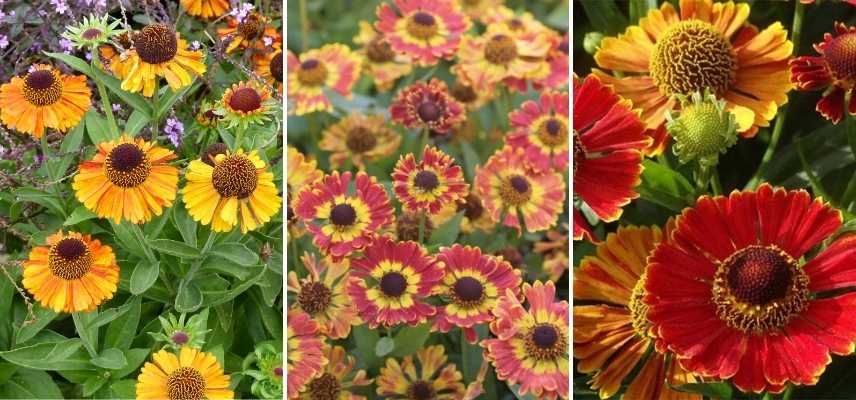
From left to right: Heleniums ‘Short ‘n Sassy’, ‘Fuego’, and ‘Poncho’
When to plant helenium in pots?
Planting of helenium in pots generally takes place in spring, in March-April or in autumn from October to November in warm regions, outside of frost and drought periods.
Discover other Helenium
View all →Available in 1 sizes
Available in 1 sizes
Available in 1 sizes
Available in 2 sizes
Available in 1 sizes
Available in 3 sizes
Available in 1 sizes
Available in 3 sizes
Available in 1 sizes
Available in 1 sizes
Planting Helenium in Pots
What type of pot to choose?
Plant it in a large container, whether terracotta, plastic, or resin, it will suit the Helenium. Choose a pot slightly larger than the root ball, with a diameter between 30 and 50 cm. The container should be deep enough for its roots to develop comfortably and, importantly, well-drained at the bottom to allow excess water to escape.
The substrate
Helenium requires soil rich in organic matter to ensure good flowering, well-drained, and remaining cool during summer, especially in the first year after potting. Prepare a mix of 50% potting soil for containers and planters, 40% compost, and 10% river sand.
Although it enjoys cool soils, it still needs a well-draining substrate. In a pot, a drainage layer (gravel, broken pot shards, clay balls, pumice) will be essential at the bottom of the container.
Planting
Prepare the planting mix.
- Spread a good layer of drainage at the bottom of the pot
- Cover with substrate and dig a hole to place the Helenium
- Position the root ball in the centre of the container
- Fill in with your mix
- Mulch and water regularly after planting
Exposure
Choose a very sunny spot sheltered from the wind; its flowering will be particularly generous there.
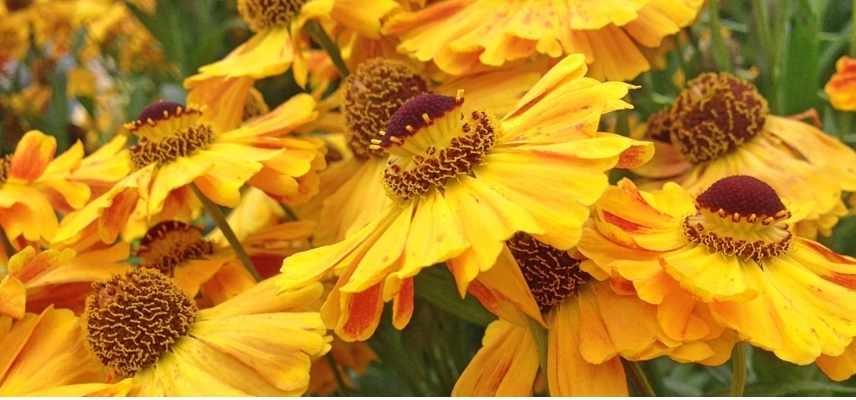 A well-sunny exposure will lead to beautiful flowering
A well-sunny exposure will lead to beautiful flowering
Read also
Multiplying heleniumsHow to care for pot-grown helenium?
Helenium is a low-maintenance perennial as long as it receives adequate light, water, and nutrients during the summer.
Watering
More than in open ground, Helenium grown in pots will require plenty of water. The substrates of potted plants dry out faster than soil in the garden. Water very regularly, never allowing the substrate to dry out. In case of high summer temperatures, water daily but avoid flooding the soil to prevent root rot. Mulch around the base to ensure sufficient coolness in summer. However, avoid wetting the foliage to limit the occurrence of diseases like powdery mildew.
Fertiliser Application
Helenium is quite greedy. In pots, it requires regular fertiliser application. Fertilise with an organic fertiliser for roses in granule form, for example, or for container plants during the flowering period. You can also add a bit of compost at its base in spring.
Pruning
Throughout the summer until October, remove faded flowers as they appear to prolong flowering. At the beginning of spring, before new growth begins, cut back the dry stems to 15 cm using shears or a pruning shear.
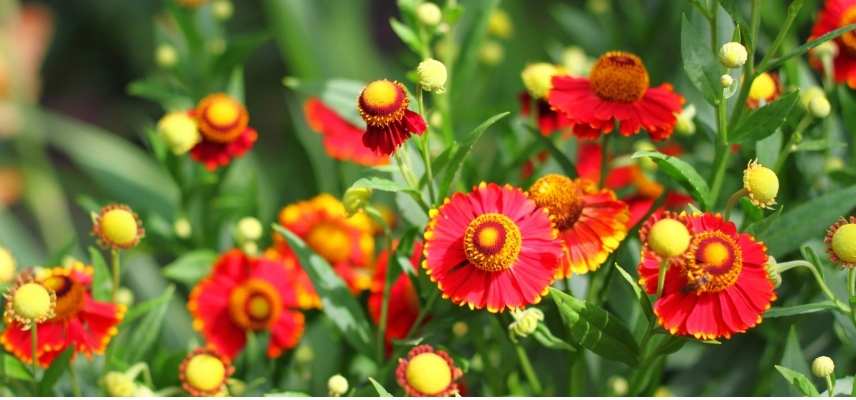 Remember to prune faded inflorescences to encourage new onesRepotting
Remember to prune faded inflorescences to encourage new onesRepotting
Repotting is recommended every two years at the beginning of spring, in the same pot or a slightly larger one, depending on growth. If you do not wish to repot, simply top-dress: remove a bit of substrate from the surface by a few centimetres, then replace it with fresh, nutrient-rich potting soil.
Diseases
Rarely diseased, Helenium can sometimes be susceptible to powdery mildew, which appears as a white mould on the leaves in cases of excess moisture, for example. To prevent and combat this fungus, consult our advice sheet Powdery Mildew or White Disease.
In spring, it is best to protect young shoots from the appetite of gastropods, discover our tips: Slugs: 7 ways to fight effectively and naturally.
Wintering
Being quite hardy, Helenium can survive winter outdoors. However, potted plants are more vulnerable to the cold. In very cold regions, spread a mulch around the base to protect its roots from the cold and frost.
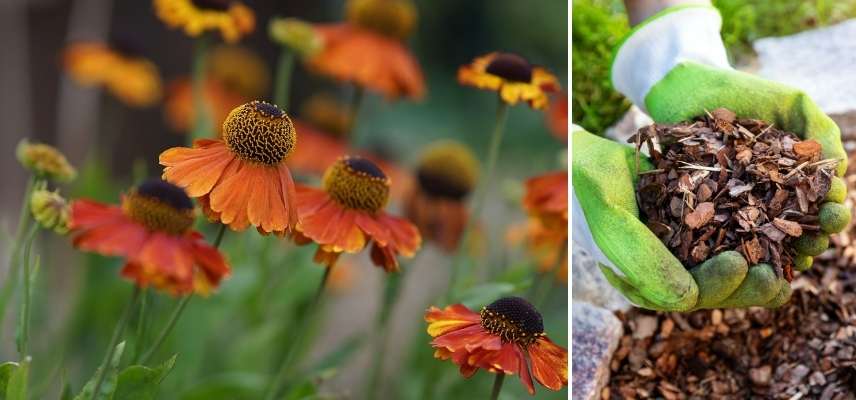 To properly protect a Helenium from the cold in harsh climates, mulch the surface of the substrate
To properly protect a Helenium from the cold in harsh climates, mulch the surface of the substrate
For further reading
The most beautiful heleniums, some of which are rare and exclusive, are in our collection!
- Subscribe!
- Contents
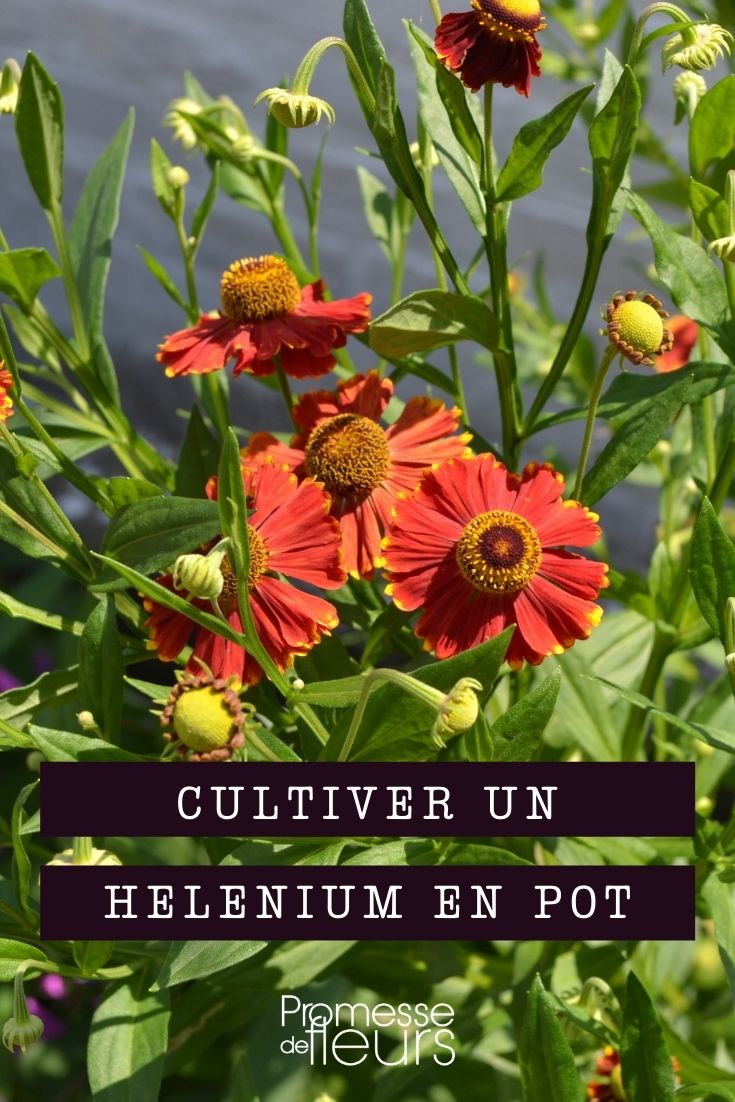































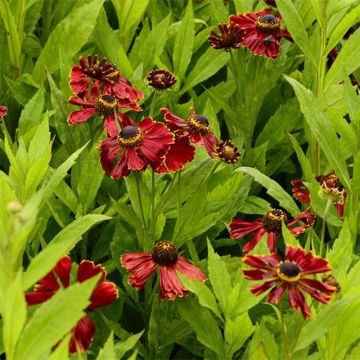
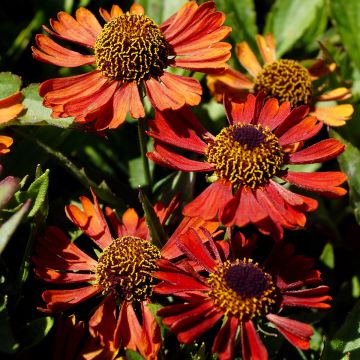



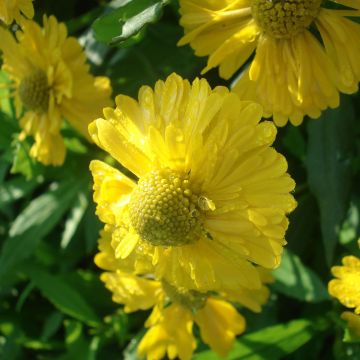
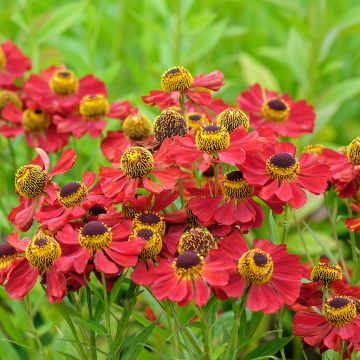
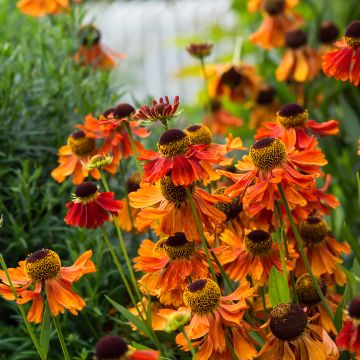
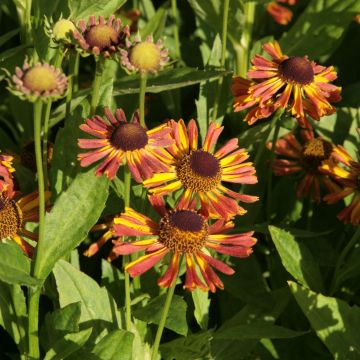

Comments